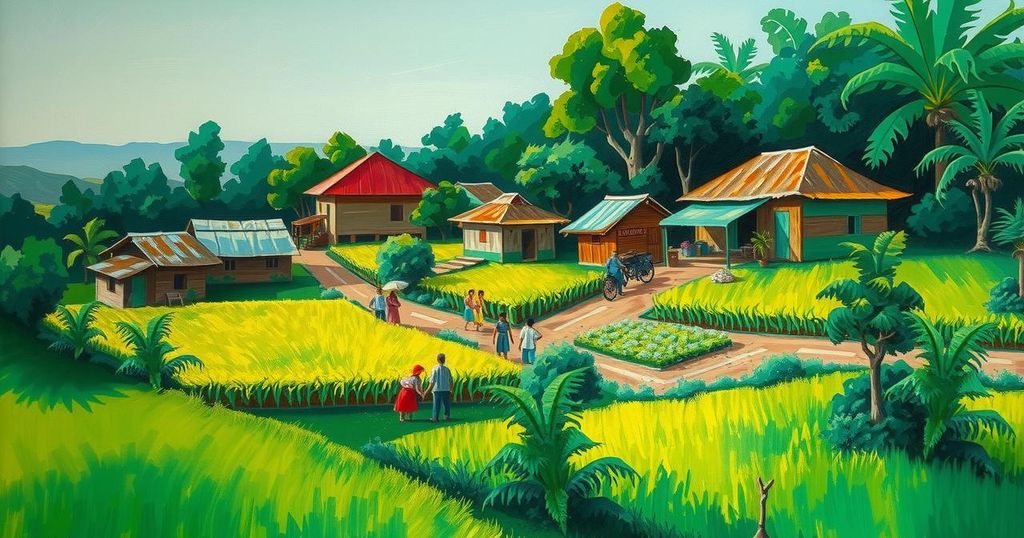Severe Geological Activity in Ethiopia: Earthquakes and Volcanic Eruptions Impact Communities
Ethiopia is facing significant geological disturbances, including the strongest recorded earthquake near Abomsa and subsequent volcanic activity. Local officials are addressing the destruction of homes and schools, especially in the Dulecha district. Thousands have been displaced due to severe infrastructure damage, prompting urgent safety measures as conditions worsen.
Ethiopia is currently experiencing significant geological activity, marked by both volcanic eruptions and powerful earthquakes. The most substantial earthquake to date struck 56 kilometers south-southeast of Abomsa, with a previous tremor measuring magnitude 5.5 occurring 44 kilometers northeast of Awash at a depth of 10 kilometers. Local officials, such as Abdulla Ali, the senior administrator of Gabi Rasu, are implementing measures to safeguard residents, including those who have been displaced and placed into temporary shelters due to the destruction of their homes.
The recent volcanic eruption has been preceded by a series of earthquakes that have intensified over the past week. This culminated in damaging impacts on communities located near critical infrastructure, particularly in Segento Kebele, Dulecha district, close to the Kessem Dam and Kessem Sugar Factory. Reports indicate that numerous homes and schools, including the Ungaytu school in Sabure Kebele, have sustained severe damage. Residents have expressed concerns regarding their living conditions, with observable structural damage such as cracked asphalt and water ingress through the ground.
According to information from the Addis Standard news agency, persistent seismic activity in Awash Fentale has led to the collapse of over 30 residences, displacing thousands of inhabitants and compelling them to seek refuge in neighboring regions. This series of geological events is a stark reminder of the volatile nature of the area, prompting urgent attention from local authorities in ensuring community safety.
Geological instability in certain regions of Ethiopia, particularly near the Great Rift Valley, has historically resulted in frequent seismic events and volcanic activity. The area is characterized by tectonic movements that can trigger both eruptions and earthquakes, often leading to significant social and infrastructural disruptions. As populations grow and communities develop in these regions, the consequences of such natural phenomena become more pronounced, necessitating the implementation of effective disaster management strategies. Recent disasters in the Gabi Rasu area highlight the urgent need for preparedness and community resilience in the face of geological threats.
The recent series of volcanic eruptions and earthquakes in Ethiopia has had a profound impact on communities, with significant destruction to homes and infrastructure. Efforts by local authorities to implement safety measures and provide temporary shelters for affected residents are crucial during this challenging time. Continuous monitoring and responsive action are necessary to address the escalated risks posed by these geological activities, ensuring the safety and well-being of the local population.
Original Source: www.plenglish.com




Post Comment